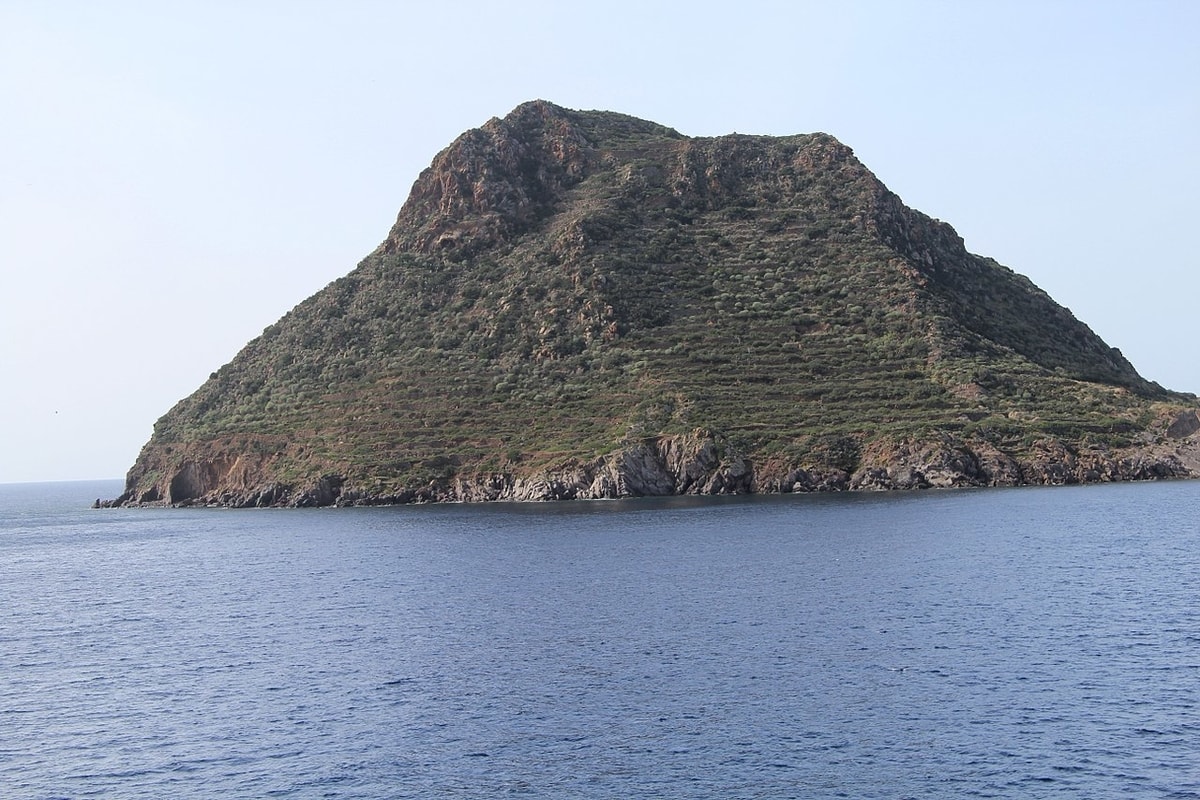


In the vast tapestry of history, the allure of ancient civilizations captures our imagination and beckons us to uncover their secrets. Among these remnants of bygone eras lies a gem perched on a rugged Italian cliffside—the Prehistoric Village Capo Graziano.
| Dive into the heart of Sicilian luxury with our villa rental Sicily options, where elegance meets the Mediterranean. |
If you find yourself fascinated by stories etched in stone and earth, yearning to connect with the distant past, this place is an echo from antiquity waiting for you.
Set on Filicudi Island‘s sun-drenched plateau, Capo Graziano invites whispers of its 1700 BC origins into present-day discovery. This blog will provide keys to unlock the mysteries held within its ancient walls and pottery shards—each piece an intricate part of human legacy.
Through exploring this prehistoric village, we’ll trace steps back to highest point in time where life thrived amidst volcanic hillsides and azure seas.
Prepare to travel through history as we delve into a world that flourished long before modern memory took shape. Let curiosity guide your journey onward!
Nestled on the rugged shores of Filicudi, one of the enchanting Aeolian Islands, Capo Graziano holds the echoes of a distant past. This prehistoric village whispers tales from an era when oval-shaped huts dotted the island landscape, serving as silent sentinels over the azure waters.
The site has emerged as a cornerstone for Aeolian archaeology, unearthing cultural heritage that stretches back to the enigmatic Bronze Age.
Capo Graziano’s significance extends beyond its ancient foundations; it reveals the intricate bonds that exist between man and nature amidst volatile volcanic isles. Architectural remnants discovered there paint a picture of proto-Mycenaean style dwellings—harbingers of civilization at highest point in Italy’s storied history.
Amidst this archaeological treasure trove lie indigenous ceramics and tell-tale signs of violent destruction that offer a glimpse into life over three millennia ago, solidifying Capo Graziano as an invaluable portal to humanity’s formative years.
Delve into the enigmatic past of Capo Graziano, where layers of history reveal a prehistoric settlement poised on the cusp of time’s embrace violent destruction. Unearthed through meticulous excavation, this ancient village offers a narrative etched deep within the earth, whispering tales of violent destruction to those who seek to see italy unravel its long-guarded secrets.
The Prehistoric Village of Capo Graziano unveils a tapestry woven from the threads of ancient human endeavor. Its buried treasures whisper tales of Bronze Age existence, offering a rare glimpse into the lives and rituals that shaped early Mediterranean cultures.
Each unearthed artifact—the fragments of Neolithic pottery, the small yet revealing monuments—serves as a testament to an era shrouded in time’s embrace.
Archaeologists unravel these silent narratives through meticulous excavation, each discovery shedding light on how our ancestors interacted with their environment and each other. The village stands as both a custodian and chronicle of heritage, its soil rich with clues that connect us to those who walked this earth millennia ago.
By piecing together the remnants housed within its bounds, we honor not just history but humanity itself—a continuous journey etched into the very landscape at Capo Graziano.
Delving into the heart of Capo Graziano unravels a tapestry of history woven deep within its soil. Archaeologists have meticulously excavated this site, unearthing treasures that speak volumes about prehistoric life.
Nestled amidst the rolling emerald waves of the Tyrrhenian Sea, Capo Graziano whispers tales of ancient habitation, its very earth imbued with the mystique of prehistoric life. Here, one’s imagination takes flight over a rugged landscape where once stood structures that bore silent witness to millenniums past, offering an unparalleled glimpse into Neolithic elegance and endurance.
Perched atop a commanding plateau, the prehistoric village of Capo Graziano unveils a tapestry of nature’s grandeur and antiquity’s echoes. At 100 meters above sea level in the cerulean embrace of the Tyrrhenian Sea, inhabitants once surveyed their maritime domain with vigilant eyes.
The island landscape here breathes a symphony of islands of rocky outcrops and islands of luscious greens, set against panoramic views of islands that stretch to the horizon where sky above island meets sea below island in an endless azure line.
The terrain itself played muse to early human innovation, inspiring dwellings that harmonize with the dramatic silhouette of Filicudi Island’s rugged coastline. Today, this sentinel point continues to captivate those who seek whispers from our primordial past amidst landscapes untamed by time.
As visitors turn their gaze from land to sea, they prepare for tales of submerged history where marine archaeology reveals secrets once claimed by waves: we venture next into Capo Graziano’s alluring depths at its Underwater Museum.
Nestled ingeniously within its rugged terrain, the prehistoric village of Capo Graziano reveals its architectural prowess through a collection of oval huts that echo the ingenuity of ancient minds.
These structures, unearthed from their rest beneath centuries-old soil, date back to an impressive 3000 BC, offering a tangible connection to early human settlement practices. Crafted meticulously with what resources were available at the time, these dwellings stand as testaments to Neolithic architecture and speak volumes about how our ancestors shaped their world.
The most iconic structure discovered among them, hut 1—unveiled in portions discovered during the excavations of 1982 and the excavations of 1983—serves as the highest point, a cornerstone to understanding this community’s very structure and daily life.
Here we witness the confluence of functionality and simplicity: walls likely fashioned from local materials stood strong against time’s wear; meanwhile inside these huts, one can almost hear the whispers of ancient conversations or smell remnants of fires that once crackled within their centers.
This skeleton framework invites us not just to observe but to immerse ourselves into a past replete with resourcefulness and resilience.
Nestled amidst a tableau of rugged natural splendor, the Neolithic Village of Capo Graziano emerges as a testament to antiquity’s ingenious dwellers, their lives etched into the very earth that once cradled their dreams.
Here, the whispers of an ancient epoch speak through unearthed relics and sophisticated structures, inviting us to explore a world steeped in prehistoric prowess and timeless allure.
The Neolithic period heralded a dramatic shift in human history, with the village of Capo Graziano standing as a testament to these transformative times. Its discovery peeled back the veil on ancient life, offering glimpses into early settlement patterns and cultural developments.
Here lie the echoes of prehistoric communities who pioneered colonization in Italy’s lush landscapes, an endeavor that etched their story onto the canvas of history.
Unearthing fragments of Diana-style pottery from 3000 B.C., archaeologists have pieced together vivid images of daily life during this era at Capo Graziano. This prestigious site bears witness to a sophisticated material culture, illuminating connections between Mediterranean civilizations long before recorded history began.
The facies associated with this locale remains its oldest cultural imprint; each artifact discovered or found contributes valuable insights into the complex tapestry of Neolithic trade networks and social structures that exist or once did exist and thrived across these storied isles.
Capo Graziano’s soil whispers tales from the distant Bronze Age. Sophisticated readers will revel in the luxurious tapestry of history woven by these ancient marvels.
Divers at Capo Graziano island are treated to an aquatic gallery where ancient treasures sleep beneath the waves. In a rare convergence of natural beauty and historical grandeur, sunken artifacts offer a silent narrative of past civilizations.
This subaqueous exhibition, stretching along the ocean floor, captures millennia in frozen tableaux. Explorers can glide over relics that once graced Neolithic homes—pottery shards, tools, and echoes of everyday life—all meticulously preserved in their watery tomb.
Elegance merges with adventure as visitors immerse themselves amid ruins shrouded by marine mystery. The Underwater Museum stands apart as a cultural wonder unseen from land’s embrace.
Each submerged stone whispers secrets of a prehistoric community that thrived on these isles—a testament to human endurance etched into the seabed for those daring enough to seek history in its most hidden form.
Exploring this museum is not merely an act of observation but an intimate dance with antiquity among fishes and corals—an exclusive chapter in any cultured traveler’s journey through time’s depths.
Recent discoveries at Capo Graziano have stirred the archaeological community, shining a light on a civilization long shrouded in mystery. These findings offer a glimpse into lifestyles and traditions of an ancient society that thrived during the Bronze Age.
Explore the timeless allure of Capo Graziano, an island where prehistoric sagas whisper through stone remnants. Allow the village’s ancient tales to seep into your essence as you stand atop its storied plateau.
Embrace this encounter with deep history—a privilege that marries cultural enrichment with the sheer elegance of Aeolian antiquity. Capo Graziano beckons, offering an experience that surpasses mere sightseeing; it invites a soulful journey through epochs long past.
Here, amidst tranquil seas and archaeological wonders, awaits an unforgettable chapter in your pursuit of heritage and luxury.
Embark on a journey through time as you explore the archaeological sites of Capo Graziano, where ancient artifacts and structures reveal the mysteries of bygone civilizations.
Wandering through these hallowed grounds connects you intimately with our ancestors, bestowing upon your soul the rich tapestry of their cultural and historical narratives etched in stone and earth.
Yes, immerse yourself in an exquisite canvas of life that once flourished here; every path leads to profound encounters with spirits from millennia past, inviting your spirit to dance alongside theirs.
Behold a place where each artifact whispers legends into the winds—a sanctum preserving antiquity’s wisdom for those who seek enlightenment amidst its sacred remnants.